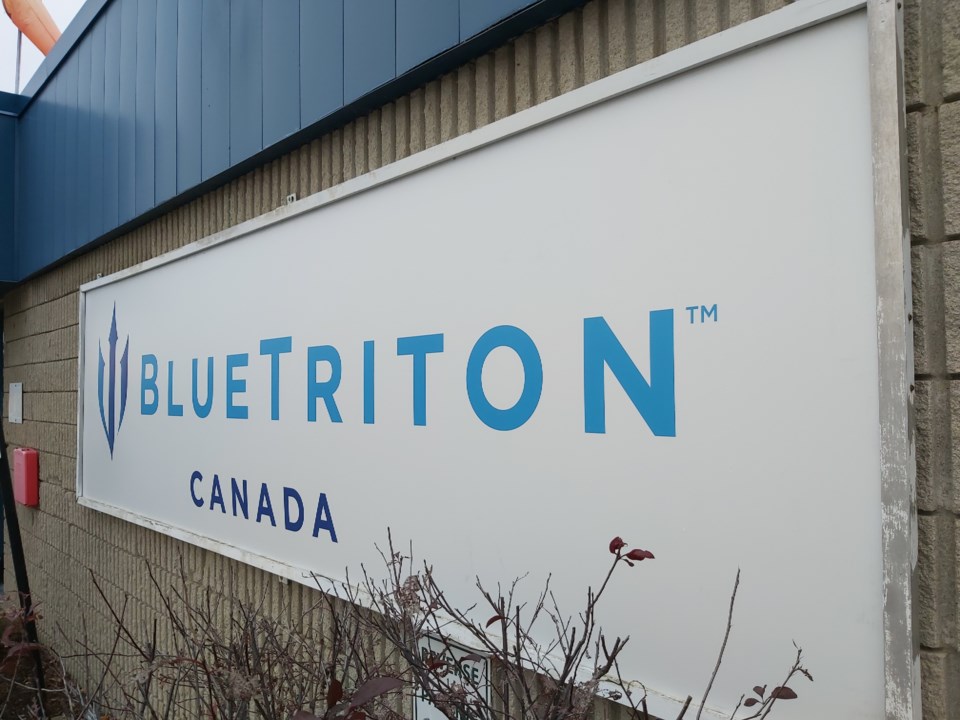WELLINGTON COUNTY – BlueTriton officials stressed there is no plan to increase water taking for bottling and their operations in Wellington County are not impacting surface water levels.
The conglomerate, which bought Nestle Waters Canada in 2021, held an annual engagement meeting earlier this week on technical data gathered from Jan. 1 to Nov. 15 last year. The former company also held these meetings with stakeholders from local municipalities and water organizations.
BlueTriton owns the bottling facility and wells in Aberfoyle and a well in Hillsburgh.
Their year-end technical report stated the company took just under 600 million litres through the above mentioned time period from the Aberfoyle well, called TW3-80.
This amounts to about 45 per cent of their permitted annual volume from their permit to take water (PTTW).
In Hillsburgh the total water taken was just under 23 million litres, about six per cent of what they are allowed to.
Andreanne Simard, natural resource manager for BlueTriton, said at the meeting this data is collected by third party consultants including hydrogeologists.
Greg Padusenko, a hydrogeologist with Golder Associates, explained his findings did not show any adverse effects to surface water levels in the Mill Creek from their water taking operation in Aberfoyle.
“Surface water levels generally fluctuate in response to precipitation, snow melt and evapotranspiration with no measurable effects from pumping at the current rate,” Padusenko said at the meeting.
Simard explained in an interview after the meeting BlueTrition takes water from a deeper system aquifer and there is a layer of protection between that and the surface water.
“They’re not really connected to the aquifer where we’re taking our water from and there’s an aquitard actually in between the two units,” Simard said, adding an aquitard is a confining unit that protects the deeper aquifer as well and reiterated Padusenko’s point of climate, seasons and weather having an impact on surface water levels.
Stan Denhoed, a hydrogeologist and engineer attending the meeting on behalf of the Township of Puslinch, noted there has been a slight decline year over year in water taking at the Aberfoyle site and questioned what conditions would result in an increase in water taking.
“Our concern is that if we’re going to see an increase in taking to the permitted rates eventually, that’s where we have a greater concern in drought conditions to occur,” Denhoed said.
Simard said there is no specific plan to increase water taking overnight and it would mostly depend on demand.
“We only really produce what the demand is for our customers, so at this point it’s really hard for me to predict what will happen,” Simard said.
Denhoed later pointed out in the Aberfoyle region, 86 million litres of water is taken by various industries per day and BlueTriton is a relatively small per cent of that number although he added “a small percentage of a very large number is still a large number.”
But he also said the lack of precipitation seen the past spring was a phenomenon he had not seen in 35 years of looking at water level data in Ontario.
“We saw a significant decrease in groundwater recharge happen last year and if you go through some of the hydrographs for the BlueTriton report, you’ll see a significant difference in 2021 than 2020 or any previous year,” Denhoed said.
He stressed this wasn’t attributable to BlueTrition water takings but added the water levels in 2021 were lower than in years where there was more pumping. He asked if the company has a plan in place in response to lower water levels.
Simard responded they do have a low water response plan but again stressed they are a deepwater user.
“If we see something that’s out of the ordinary that’s below the historical norms, we certainly would look into this very deeply and work with the ministry on this,” Simard said, although noting their data shows their water taking is sustainable.
